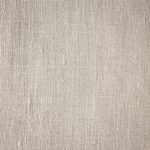Have you ever wondered if you can compost cotton fabric? Well, the answer is yes! Composting cotton fabric has several environmental benefits and is a great way to reduce waste.
In this article, we will explore the compostability of cotton fabric, factors to consider before composting, and provide you with a step-by-step guide to successfully composting cotton fabric.
Plus, we’ll share some common mistakes to avoid and offer alternative uses for cotton fabric waste.
So, let’s dive in and learn how you can compost cotton fabric effectively.
Table of Contents
The Environmental Benefits of Composting Cotton Fabric
You can reduce waste and help the environment by composting cotton fabric. Composting cotton fabric is a simple and effective way to minimize your environmental impact. Cotton is a natural material made from plant fibers, and it is biodegradable. When you compost cotton fabric, you are diverting it from the landfill, where it would take years to decompose. Instead, it can break down in a composting process and turn into nutrient-rich soil.
The composting process involves layering cotton fabric with other organic materials such as food scraps, yard waste, and leaves. The cotton fabric provides carbon, which is essential for a healthy compost pile. As the materials decompose, microorganisms break down the cotton fabric and other organic matter, turning it into compost. This compost can then be used to enrich soil in gardens, flower beds, and potted plants.
Composting cotton fabric has several environmental benefits. Firstly, it reduces the amount of waste that ends up in landfills, helping to conserve precious landfill space. Additionally, composting cotton fabric reduces greenhouse gas emissions that occur during the decomposition of organic materials in landfills. By composting cotton fabric, you contribute to the reduction of methane, a potent greenhouse gas that contributes to climate change.
Understanding the Compostability of Cotton Fabric
Understanding if cotton fabric can be composted is important. If you’re considering composting your cotton fabric, here are three things you should know:
-
Composting Process: Cotton fabric is a natural material made from plant fibers, which makes it biodegradable. The composting process involves breaking down organic materials into nutrient-rich soil called compost. Cotton fabric can be composted by adding it to your compost pile or bin along with other organic waste, such as food scraps and yard trimmings. However, it’s important to ensure that the fabric is 100% cotton and doesn’t contain any synthetic fibers or dyes, as these may not break down properly in the composting process.
-
Benefits of Organic Waste Management: Composting cotton fabric and other organic waste has numerous benefits. Firstly, it reduces the amount of waste that ends up in landfills, helping to minimize environmental pollution. Secondly, composting organic materials enriches the soil with nutrients, improving its fertility and promoting healthy plant growth. Lastly, it can save you money by providing you with free, homemade compost that can be used in your garden or for landscaping purposes.
Factors to Consider Before Composting Cotton Fabric
When considering composting cotton fabric, there are two important factors to keep in mind: the moisture content of the fabric and the time required for composting.
You should ensure that the fabric has a suitable moisture level for decomposition, as too much or too little moisture can affect the composting process.
Additionally, the composting time required for cotton fabric can vary depending on various factors such as the size of the fabric pieces and the overall composting conditions.
Moisture Content of Fabric
The moisture content of fabric affects its composting process. When composting cotton fabric, it is important to consider the moisture retention of the material. Excess moisture can lead to a slow decomposition process, while insufficient moisture can hinder the breakdown of the fabric.
To ensure proper composting, the fabric should have a balanced moisture level. This can be achieved by adding water if the fabric is too dry or adding dry materials such as leaves or sawdust if the fabric is too wet.
Maintaining an optimal moisture content will create an ideal environment for microorganisms to break down the fabric efficiently. Remember to monitor the moisture levels regularly to ensure successful composting of cotton fabric.
Composting Time Required
To speed up the composting process, make sure to regularly turn and aerate the pile. This helps to increase oxygen flow and accelerate the decomposition rate.
Here are four tips to help you estimate the time required for composting:
-
Choose the right ingredients: Use a mix of organic materials like kitchen scraps, yard waste, and shredded paper to create a balanced compost pile.
-
Size matters: Chop or shred larger materials into smaller pieces to speed up the decomposition process. Smaller particles break down faster.
-
Maintain moisture levels: Keep the compost pile moist but not soggy. Moisture helps the microorganisms responsible for decomposition to thrive.
-
Monitor temperature: A compost pile that heats up to around 130-160°F (55-70°C) indicates active decomposition. Turn the pile when the temperature drops.
Step-by-Step Guide to Composting Cotton Fabric
Composting cotton fabric is a simple and eco-friendly way to dispose of it. By composting cotton, you can reduce waste and contribute to a healthier environment. The composting process involves breaking down the fabric into organic matter that can be used to enrich the soil in your garden or flower beds.
To compost cotton fabric, follow these steps:
- Cut the cotton fabric into small pieces to speed up the decomposition process.
- Mix the cotton fabric with other compostable materials, such as fruit and vegetable scraps, leaves, and grass clippings. This helps create a balanced mix of carbon and nitrogen.
- Turn the compost pile regularly to ensure proper aeration and decomposition.
- Keep the compost pile moist by watering it regularly, but be careful not to overwater.
Here is a table to summarize the benefits of composting cotton fabric:
| Composting Process | Composting Benefits |
|---|---|
| Breaks down cotton fabric into organic matter | Reduces waste |
| Enriches soil with nutrients | Improves soil fertility |
| Decreases the need for chemical fertilizers | Supports a healthier environment |
| Reduces greenhouse gas emissions | Contributes to sustainable gardening practices |
Composting cotton fabric is not only a practical way to dispose of it, but it also has numerous environmental benefits. Start composting today and make a positive impact on the planet!
Common Mistakes to Avoid When Composting Cotton Fabric
Are you wondering if you can compost synthetic cotton blends?
It’s important to know that synthetic fibers, like polyester, do not break down in the composting process and can actually contaminate your compost.
To ensure successful composting, you should focus on proper composting techniques such as maintaining the right balance of carbon and nitrogen, turning your compost regularly, and keeping it moist.
Synthetic Cotton Blends?
If you have any synthetic cotton blends, you should be aware that they may not fully break down in compost. Unlike natural cotton fabric, which is biodegradable and can be composted, synthetic cotton blends contain materials like polyester or nylon that do not easily decompose. This means that if you throw synthetic cotton blends into your compost pile, they will not break down as quickly or completely as other organic materials. Instead, it is recommended to dispose of synthetic fabrics in the appropriate recycling bin or donate them to textile recycling facilities. By recycling these materials, you can help reduce waste and promote a more sustainable approach to fabric disposal.
Here is a table to help you understand the differences between composting natural cotton fabric and disposing of synthetic fabrics:
| Composting Natural Cotton Fabric | Disposing of Synthetic Fabrics |
|---|---|
| Biodegradable | Non-biodegradable |
| Breaks down in compost | Does not break down in compost |
| Nutrients for soil | Environmental impact |
Proper Composting Techniques
Properly maintaining a compost pile requires regular turning and moisture control. Composting can present some challenges, such as getting the right balance of carbon and nitrogen-rich materials and avoiding pests. However, the benefits of composting are well worth it.
By regularly turning your compost pile, you ensure that oxygen reaches the organic matter, which speeds up the decomposition process. This also helps to prevent unpleasant odors.
Moisture control is important as well, as a compost pile that is too dry will decompose slowly, while one that is too wet can become anaerobic and smelly.
The end result of composting is nutrient-rich, dark, crumbly soil that can improve the health of your plants and reduce the need for chemical fertilizers.
Tips for Successful Cotton Fabric Composting
For successful cotton fabric composting, it’s important to shred the fabric into smaller pieces. This helps speed up the decomposition process and allows the fabric to mix more easily with other organic materials in the compost pile. Here are some tips to help you compost cotton fabric effectively:
| Tip | Explanation |
|---|---|
| Shred the fabric | Cutting or tearing the fabric into smaller pieces increases its surface area, |
| promoting faster decomposition. | |
| Mix with other compostables | Combine the shredded fabric with other organic materials like leaves, |
| grass clippings, and vegetable scraps for a balanced compost pile. | |
| Monitor moisture levels | Cotton fabric needs moisture to decompose properly. Keep the compost pile |
| moist, but not soaking wet, to create an optimal environment for decomposition. |
Remember to turn your compost pile regularly to ensure proper aeration and decomposition of the fabric. Also, avoid adding heavily dyed or synthetic fabrics, as they may contain chemicals that can harm the composting process. By following these tips, you can effectively compost cotton fabric and reduce fabric waste in an environmentally friendly way.
Exploring Alternative Uses for Cotton Fabric Waste
Exploring alternative uses for cotton fabric waste can help reduce the environmental impact of textile waste. Instead of throwing away old or worn-out cotton fabric, there are several creative ways you can repurpose it.
One popular option is to turn the fabric scraps into reusable shopping bags or tote bags. By doing so, you not only reduce the amount of waste going to landfills but also eliminate the need for single-use plastic bags.
Another great use for cotton fabric waste is to make quilts or patchwork blankets. By sewing together different fabric pieces, you can create unique and beautiful designs that not only keep you warm but also give new life to old fabrics.
Additionally, cotton fabric waste can be shredded and turned into filling for pillows, cushions, or stuffed toys.
Composting cotton fabric waste also offers several benefits. Cotton is a natural material that can break down easily in a compost pile. By composting cotton fabric, you divert it from the waste stream and create nutrient-rich soil. This compost can then be used to fertilize gardens, reducing the need for chemical fertilizers and promoting healthier plant growth.
Conclusion
In conclusion, composting cotton fabric is a simple and eco-friendly way to repurpose textile waste.
By understanding the compostability of cotton fabric and following a step-by-step guide, you can successfully compost it in your own backyard.
Just be sure to consider factors such as fabric type and dye before composting, and avoid common mistakes like using synthetic blends or adding too much fabric at once.
By composting cotton fabric, you can contribute to a more sustainable and waste-free future.
- Will 100% Cotton Percale Wrinkle? The Honest Truth - July 15, 2025
- Why Do Toenails Tear Percale Sheets and How to Prevent It - July 15, 2025
- Why Is Percale Considered a Superior Sheet? - July 15, 2025




